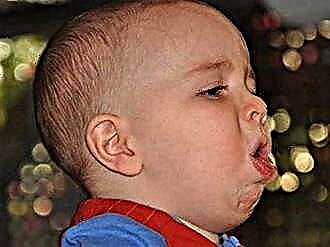Each person experienced fatigue, shortness of breath, or discomfort in the upper abdomen or behind the breastbone during intense physical activity. These symptoms cause the athlete to stop exercising and are often accompanied by fear of a "heart attack". However, there are several causes of heart pain when running, which are associated with both increased blood circulation in the organs and relative ischemia of the heart muscle. Symptoms cannot be ignored, but not all of them require urgent medical attention.
Causes of discomfort
Cardialgia is called pain in the region of the heart, which occurs due to pathology of the myocardium or diseases of other structures of the chest cavity. The mechanism of this symptom is associated with the peculiarity of the effect of running on the human body.
Jogging or sprinting, cycling, and swimming are all cardiovascular exercises. These sports are aimed at increasing the respiratory volume of the lungs, which improves the saturation of organs and tissues with a sufficient amount of oxygen. In addition, during classes, the heart rate increases, metabolic processes accelerate.
Pain in the heart when running is caused by the following reasons:
- Insufficient physical fitness of the athlete... High intensity exercise for an untrained person is a serious stress. Exercising and increasing the load trigger the processes that are necessary for the adequate functioning of the body in such conditions. The accumulation of under-oxidized products, sudden acceleration of blood flow and respiratory rate frustrate the adaptive capacity of the human body.
- Cramps in the muscles of the chest... The intercostal muscles take part in the act of breathing with a deep or rapid rhythm. In addition, they involuntarily contract during each quick step on the treadmill. Depletion of glycogen stores, insufficient oxygen supply develop convulsions that cause pain in the heart. A distinctive feature of this symptom is a clear localization (you can point with a finger) or an increase in pain on the left when bending to the right side (due to stretching).
- Heartburn... Jogging increases intra-abdominal pressure, as a result of which the cardiac sphincter of the stomach (a muscle at the border of the organ with the esophagus) relaxes. In this case, its contents are thrown upward, and due to the interaction of hydrochloric acid with the mucous membrane of the esophagus, there is a burning pain behind the sternum.
- Lung pathology... Diseases of the respiratory system (bronchial asthma) cause pain in the heart while running due to inadequate oxygenation of the blood.
The most serious reason for the appearance of unpleasant sensations behind the sternum when playing sports is angina pectoris. This diagnosis characterizes insufficient blood supply to the heart due to damage to the coronary vessels. During exercise, the myocardial demand for oxygen and nutrients increases. With vascular incompetence, ischemia and pain occurs, which are accompanied by shortness of breath, nausea, vomiting, increased sweating and dizziness.
What to do if you experience discomfort
The appearance of pain syndrome during physical education is a signal to stop training. For a further successful career in sports and in order to prevent the recurrence of pain, it is recommended:
- consultation with a doctor to establish the underlying cause;
- a decrease in the intensity of classes if the pain syndrome arose for the first time against the background of a sharp increase in the load;
- do not eat 1-1.5 hours before training (exclude the possibility of reflux);
- a balanced diet containing a sufficient amount of proteins, fats and carbohydrates, vitamins and minerals;
- regulate periods of rest, which is necessary for adequate recovery of muscles and internal organs. The increase in endurance and strength occurs both as a result of intensive training and adequate relaxation to consolidate the achieved result.
People with chronic pathology, which is the cause of pressing pain in the region of the heart, are advised to consult a doctor regarding the dosage of medicines before playing sports or competitions.
Building the right training regimen
Professional athletes often seek the help of a sports doctor, who draws up a training plan in accordance with a person's clinical parameters and the level of adaptation to stress. A rational approach to sports involves adherence to several principles:
- constancy - efficiency is largely determined by the absence of long pauses between workouts, since each break implies the need for re-adaptation of organs and systems to stress;
- gradualness - a step-by-step increase in intensity adequately develops addiction of both muscles and internal organs;
- availability - training regimes should be suitable for athletes with different levels of fitness;
- individuality - the training plan is made taking into account the characteristics of the organism of a particular person;
- variability - the ability to choose classes with different effectiveness or technique of execution, which is comprehensively physically developing.
Conclusions
The pain in the heart that arises after running is only in 5% of cases caused by cardiac pathology (hypertrophic cardiomyopathy or congenital defects). However, it is these episodes that cannot be missed, since further inadequate load leads to death. This symptom requires examination by a doctor, because according to Hamilton: "If something serious is found, you probably just saved your life."



